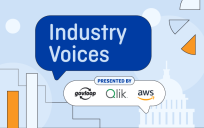This blog post is an excerpt from GovLoop’s recent report created in partnership with Nuxeo, “Modernizing Your Content: The Key to Digital Transformation.” Download the full report here.
Most agencies are accustomed to managing PDF files, Word documents and other standard text inputs. But traditional systems for managing this type of content are incapable of keeping up with the growing diversity, increasing size and the volume of unstructured content (video, audio and more) that government employees and citizens are rapidly producing.
When it comes to managing content, agencies’ top challenges include:
• Content that’s scattered across the enterprise
• Too many independent systems in place that store and manage content
• The growing number of content types and delivery channels
“Agencies are getting to the point where there’s too much data coming through to effectively classify it and determine what they need to secure and what they need to retain,” said David Jones, Vice President of Product Marketing at Nuxeo.
When that data is poorly managed, employees waste time searching for it or end up using data ineffectively. The same is true for citizens who often rely on government data to make personal decisions, such as choosing what neighborhood to live in or comparing school districts. They expect accessibility and delivery of government data to be on par with what’s provided by the private sector.
The anticipated release of the Federal Data Strategy will address these and other issues. The strategy will create a coordinated approach to federal data use and management that serves the public, which includes making information accessible for researchers, businesses and citizens.
Another goal is to improve the use of data for decision-making and accountability for federal agencies in the areas of policymaking, oversight, innovation and more. For agencies, the challenge is managing the quantity of data coming in and using it in efficient and effective ways.
But Jones said agencies can’t afford to view data as an issue that needs fixing; instead they must consider the opportunities.
“There is so much opportunity with regard to content and what we can do with it,” he said. “If you want to improve citizen engagement, understand your agency better or create new offerings, content is the way that you can do that. Content is the driving force for all of those actions and not just a problem that needs fixing.”






Leave a Reply
You must be logged in to post a comment.